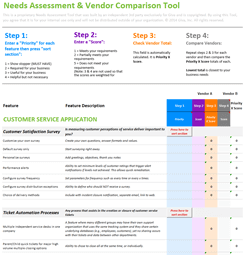Customer Support Escalated Calls Fully Examined and Top 10 Strategies
In today's fast-paced customer service landscape, customers demand quick answers. They often request to speak with a manager or a loyalty department before fully engaging with the first agent. This behavior raises an important question: what exactly are call escalations, and when should they be used?
This article aims to provide a comprehensive guide to navigating the complexities of escalated calls. This includes when and how to use them, to ensure your customer support group or call center can handle even the most challenging customer interactions.

What are Escalated Calls?
Call escalations are when a customer call is transferred to a higher level of expertise or authority within customer support. This is typically done when the initial agent is unable to resolve the issue, or the customer requests to speak with a supervisor. Call escalations test the skills of your frontline agents and reflect the efficiency of your escalation protocols.
Common Scenarios Leading to Call Escalations
- Unresolved Issues: When a customer's problem remains unsolved after the initial interaction, the call may be escalated to a more experienced agent or specialist. For example, a technical inquiry about an internet modem is not resolved via standard troubleshooting methods like a device reset. The call may now be escalated to a dedicated IT support team.
- Dissatisfaction with Initial Responses: If a customer feels that their concerns are not being adequately addressed or taken seriously, they may request an escalation.
- Complex Inquiries: Calls involving technical problems, specialized information, or intricate policy details often require the expertise of higher-level support staff. For example, if a customer calls into their bank and requests specific confidential information or a transfer of large funds, this may require the approval or override of someone in management.
- Emotional Distress: Customers experiencing frustration, anger, or distress may have their calls escalated to ensure their emotions are managed with care and empathy. In some cases, customers may take solace in knowing that you, as the primary agent, are sending their call to a higher level of authority.
- Request for Manager: Some customers may directly ask to speak with a manager or supervisor, bypassing the first level of support. While their inquiry may not require this level of support, accommodating such requests can sometimes expedite resolution and reduce the chance of conflict.
Read more: 12 Top Techniques for Customer Service Problem Solving
The Role of Call Escalation Protocols
Call escalation protocols are essential in providing a structured approach to managing complex or sensitive issues. They ensure that customers receive the appropriate level of support promptly. Clear protocols help maintain consistency in terms of when to escalate a call. This can help prevent confusion among staff and reduce frustration for your customers.
-
Key Components to Effective Call Escalation Protocols
Predefined Triggers: Specific criteria or situations that automatically warrant an escalation. Examples can be technical issues beyond the first-level agent's expertise or customers demanding to speak with a supervisor.
Escalation Paths: A clear roadmap outlining who the call should be escalated to, depending on the nature of the issue. This ensures that the call reaches the right person with the appropriate skills and authority to resolve it. Few things frustrate a customer more than being passed around from agent to agent like a hot potato.
-
Customization Across Industries and Organizations
Escalation protocols are not one-size-fits-all. They vary significantly across different industries and organizations, depending on their specific needs and challenges. For example, a healthcare provider may have different escalation triggers and paths compared to a tech support company. Customization is key to ensuring that the protocols are effective in addressing the unique requirements of each industry and their clients.
Your plan should also allow for flexibility. For example, your instructions may indicate transferring to a manager when a customer demands one. However, there are situations where a manager's involvement may not be the most effective solution. Higher-level employees should not be inundated with minor issues. They should instead be dealing with more complex situations.
When to Escalate a Call: A 3-Step Decision-Making Guide
Determining when to escalate a call is often a judgment decision that requires careful consideration. Here are three pillars that can guide an agent into making an informed choice:
- Assess the Issue's Complexity: If the problem is beyond the agent's knowledge or authority, escalating the call to a specialist or higher authority may be necessary for resolution. An agent should never assume or guess, as being wrong can create larger issues and frustration for the customer.
- Consider the Customer's Emotional State: If a customer's frustration or anger is escalating despite the agent's efforts to calm the situation, it may be time to involve a supervisor or manager. Even if it is not necessary, getting a manager involved can sometimes help a customer feel as though they are in a more advanced state of resolution.
- Identify Safety or Security Concerns: Any call that raises safety or security issues should be escalated immediately to the appropriate department or authorities. More specifically, we are referring to harmful threats to individuals or the organization.
Remember: While resolving the issue on the first call (First Call Resolution/FCR) is ideal, agents should recognize situations where escalation is in the best interest of the customer and the company. The decision to escalate should be based on the goal of providing the most effective resolution, not just on closing the call quickly.
10 Top Strategies for Effective Handling of Escalated Calls
Empowering Frontline Agents
Empowering agents with the right training and resources is the most important step towards effectively handling escalated calls. Ensure that your team is equipped with:
-
Comprehensive Training
Provide training that covers technical skills, product knowledge, and customer service excellence. Scenario-based training can be particularly effective for preparing agents to handle tough situations. There should also be clear parameters as to when a call is sent to the next level of support.
For example: A customer begins to use foul language. Or there is a known defect with a specific product. Addressing this defect requires a higher level of support. Front-line agents are not equipped with the expertise to solve this particular situation and should immediately transfer the call to level 2 support.
-
Access to Information
Agents should have quick access to customer histories, product details, and support policies to provide informed responses during escalations.
For example: Using Giva's Customer Service Software in the Cloud to access knowledge bases, create self-serve portals, and handle Tsunami Tickets™, all from an efficiently laid out dashboard.
Techniques for De-escalating Tense Situations
De-escalating tense situations is key to resolving escalated calls successfully. Once a customer has been transferred, they are likely at a point of peak-frustration. Once they reach you, they expect to have their situation solved. Here are some techniques to keep things calm and under control:
-
Stay Calm and Listen
Teach agents to remain calm, listen actively, and validate the customer's feelings to reduce tension and show empathy. If an agent becomes heated, it is only going to make the situation worse.
Remember: In most cases, the customer is angry at the company, its product and policies - not at you specifically. Therefore, do not feel as though their anger is personally directed at you.
-
Use Calming Language
Encourage the use of phrases that convey understanding and willingness to help, such as "I understand why that would be frustrating," or "Let's see how we can resolve this together."
-
Offer Solutions
Allow agents to offer solutions or alternatives when possible. This can help in regaining the customer's trust and de-escalating the situation.
For example: If a customer is upset with the battery life on their new smartphone, you may look to offer them a one time complimentary battery replacement.
Transparency and Communication
Maintaining transparency and clear communication throughout the escalation process is vital. No matter if the customer is right or wrong, you want to ensure you remain honest:
-
Explain the Process
Inform customers about what to expect during the escalation process. Clear communication about the steps being taken can alleviate anxiety and build trust.
For example: An agent must go through certain troubleshooting steps before the situation can be escalated to level 2 support. If this is the policy, be sure to communicate it up front.
-
Regular Updates
Keep the customer updated on the progress of their issue. If an escalation takes longer than expected, communicating this proactively can help maintain customer patience.
For example: As a customer is on hold, chime in from time to time with updates. For instance, "Hi Mark, we are in the process of remotely rebooting your device. Everything is looking good, and we should be back online in 5-10 minutes. Thanks for your patience".
-
Feedback Loop
Encourage and facilitate feedback from customers post-resolution to learn from each escalation and continuously improve the process.
For example: Sending your customers a survey to complete via email. If capacity exists, a more personal approach could involve providing a courtesy call.
Creating a Supportive Environment for Agents
It's important to recognize that handling escalated calls can be stressful for agents. Providing a supportive environment can significantly impact their ability to manage these situations effectively. This includes:
-
Peer Support Systems
Encourage a culture where agents can seek advice and support from peers during challenging calls.
For example: Have level 1 and 2 agents sit nearby one another, or offer them easy access to chat via a program like Microsoft Teams. This way, if they have to put a customer on a brief hold to clarify details, it can be done in an efficient manner.
-
Supervisor Accessibility
Ensure that supervisors are readily accessible to step in or provide guidance when calls escalate beyond the agent's control.
For example: Ensure adequate staffing of supervisors so agents and customers can receive support in relatively quick order.
The Importance of a Call Escalation Continuous Improvement and Feedback Loop
Like any important corporate protocol, ongoing evaluation and refinement are essential to ensure normal operation, continuous improvement, and adaptation to evolving challenges. Here are key areas to focus on when it comes to staying on top of policies like call escalation:
-
Data Analysis
Regularly analyze call escalation data to identify patterns and trends. This helps pinpoint common issues and areas needing improvement.
For example: If customers regularly call and immediately demand a manager, consider reinforcing that managers become available only after initial troubleshooting or research by the primary agent. This is common in big telecommunications companies, where customers may bypass initial support hoping to negotiate better plans directly with retention or cancellation departments.
-
Agent and Customer Feedback
Actively solicit and incorporate feedback from both frontline agents and customers. Agents can provide insights on procedural inefficiencies, while customers can offer perspectives on their satisfaction with the resolution process.
Important: While customer feedback is important, frontline agents also deserve a voice. They can suggest procedural updates to make call escalation policies more efficient. For instance, if agents notice regular complaints about the time it takes to reach level 2 support, management could refine the initial troubleshooting phase. This can help streamline the transfer process to save customers time and reduce frustration.
-
Training Updates
Use lessons learned from past escalations to update training programs. This ensures that all agents are equipped with the latest best practices and knowledge to handle complex calls effectively.
Remember: It is important that your agents provide a consistent experience to customers. The protocol for escalating calls from one agent to another shouldn't vary significantly. This should be regardless of whether the agent is a seasoned veteran or a new hire.
Read more: 15 Top Ways to Elevate Your Customer Service Strategy
Leveraging Technology in Call Escalations
Leveraging cutting-edge tools and software can greatly assist effectively managing escalated calls. Here are a couple of the most important systems to have in place:
-
The Role of CRM Systems and Ticketing Tools
Customer Relationship Management (CRM) systems and ticketing tools are foundational in managing call escalations efficiently. These systems allow for the seamless tracking of customer interactions from initial contact through to resolution. This can help make sure that all relevant information is accessible in real-time. By integrating CRM systems, agents can quickly retrieve a customer's history and current status. This allows for providing personalized and informed support. It also saves the customer from having to explain their situation more than once, especially if they are calling in about the same situation over and over again.
Additionally, ticketing tools help in organizing and prioritizing escalation tickets, ensuring that critical issues are addressed promptly and by the right personnel.
-
Automation and AI-Driven Solutions
Automation and AI-driven technologies are transforming the way customer support departments or call centers handle escalated calls. Automated systems can route calls based on complexity or specific customer needs to the most appropriate support tier or specialist without manual intervention. This method is usually found in the form of automated chat bots, or selection menus on a phone call.
These solutions not only speed up the resolution process but also ensure that customers are always interacting with someone who has the right skills and information. Moreover, AI can analyze customer sentiment and urgency from voice and text interactions. This can help support groups and call centers to prioritize calls in real-time based on these insights. Such technologies enhance the efficiency of call escalations and help optimally allocate resources during peak times or when dealing with sensitive issues.
The Bottom Line: Master Your Escalated Call Procedures for More Efficient Business
In today's customer service, effectively managing escalated calls is paramount to keeping customers happy and maintaining operational efficiency.
Throughout this post, we've explored the key components of call escalation management, from understanding when and why to escalate, to implementing the right strategies and technologies. Remember, the right tools, like CRM systems and AI-driven solutions, are not just the future--they are the present. These technologies play a critical role in streamlining the call escalation process.
Beyond all this, do not forget your most important asset--your frontline agents. Ensure you are regularly gathering feedback from them and providing the training they need to be successful in their roles.
Giva Can Help You Streamline Your Customer Service Processes
To see firsthand how technology can transform your approach to escalated calls, consider trying Giva's Customer Service Software in the Cloud. Get your 30-day risk-free trial today to experience the benefits of specialized tools for enhancing customer support and call center operations.





